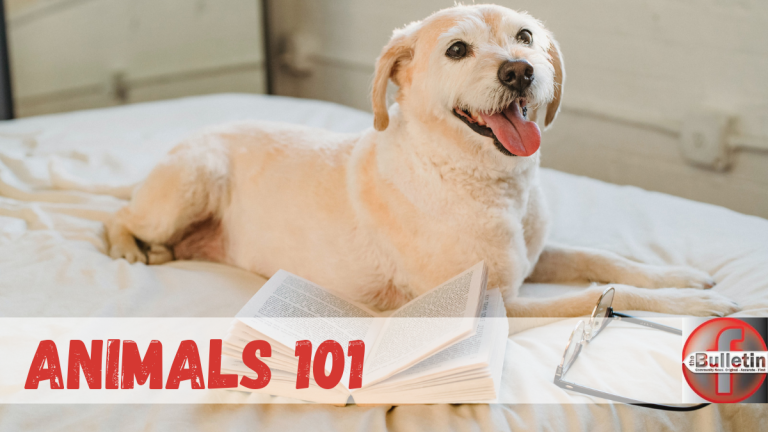
DECODING THE CANINE CONVERSATION
Understanding dog body language is like unlocking a secret code to their emotions and intentions. Dogs, being non-verbal creatures, rely heavily on their body to communicate with the world around them. Every wag of the tail, tilt of the head, or prick of the ears tells a story about their current state of mind. Delving into the intricacies of canine body language not only deepens the bond between humans and their furry companions but also enhances our ability to provide the care and attention they deserve.
Let’s explore some of the more common body language in the canine conversation.
WHAT IS BODY LANGUAGE?
Most animals use body language as well as sound and smell to communicate with one another. Body language is the movements of animals’ facial expressions, eye behaviour, posture, and the movement of their body parts is inherent in all creatures including humans.
Many people think that it is easy to ‘read’ their dog, but there are so many subtle signs that many people don’t pick up on. Decoding your pet or another pet’s body language is not as straightforward as looking at a tail wag or the ears. Lexi Donnelly, a behaviour consultant at Best Friends Animal Society, shares how you usually see several dog body language signals happening at once. To make dog expressions even more nuanced, “Body language signals can be challenging due to breed difference and physical appearance, such as cropped ears, docked tails, wrinkles, etc.”
WHY IS BODY LANGUAGE IMPORTANT?
Dogs don’t use words, but through the gestures of our canine companions they can express a wide range of emotions and actions and it is crucial for communication. Your ability to understand and interpret body language can help you pick up on unspoken issues or feelings in your pets. When we understand body language, we can better understand our pets and meet their needs which will deepen our relationship. Dog bites and fights can also be prevented by better understanding and predicting behaviour.
I am not a behaviourist, but I will share some of the basics I have learned about this topic. We can’t begin to cover the full extent of dog body language (or other animals) in one article, so we will look at the basics only! Check out these PAWSOME BODY LANGUAGE pictures from www.RPLUSDOGS.com and here are a few body gestures from other species.
To understand a dog’s communication signals, it’s necessary to pay attention to specific body postures, movements, and facial gestures although we do need to look at them all together and within context too.
DIFFERENT BODY LANGUAG CUES
Gilbert-Gregory gives the following cues:
HOW A DOG LOOKS WHEN RELAXED
Posture — The weight is carried evenly; may do a play bow or wiggle.
Tail — Relaxed and neutral position; may be wagging.
Ears — Neutral position.
Mouth — May be open with tongue hanging out, or may be closed with lips relaxed over teeth.
Eyes — Soft, with normal pupil size.
Appetite — Readily eats.
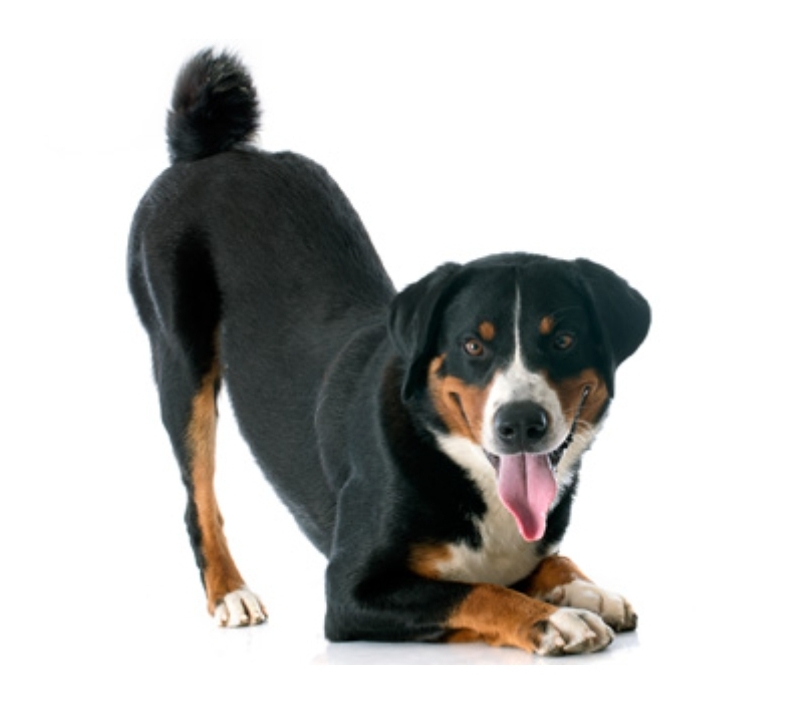
HOW A DOG LOOKS WHEN ANXIOUS
Posture (and fur) — Piloerection (raised hair on the shoulders and back); might roll over and lift a forelimb.
Tail — Might be tucked in under the body.
Mouth — Might show a submissive smile (a very wide smile), or may be panting, lip licking and/or yawning.
Ears — Pinned back.
Eyes — Whale eye (white portion of the eye showing at corner or rim), pupil dilation, or averted gaze.
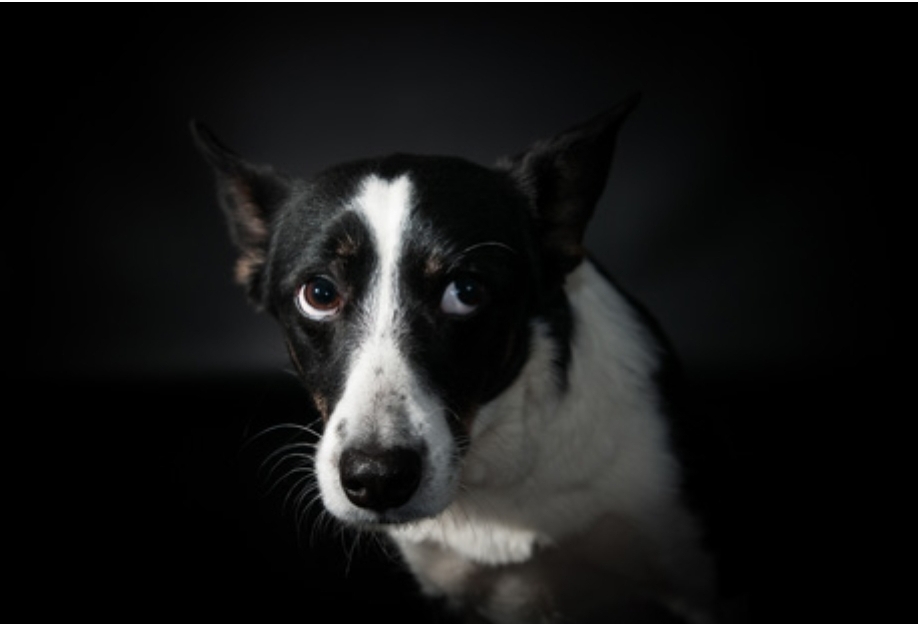
HOW A DOG LOOKS WHEN AGGRESSIVE
Posture — Muscles tense, weight shifts back and low to the ground; may also roll over to expose belly or raise one paw.
Hair — Piloerection is a red flag.
Tail — May be tucked or low to the ground; may be wagging slowly or rapidly.
Mouth — Pulled back, with possible growling, snarling, excessive panting, lip licking, chewing, or yawning.
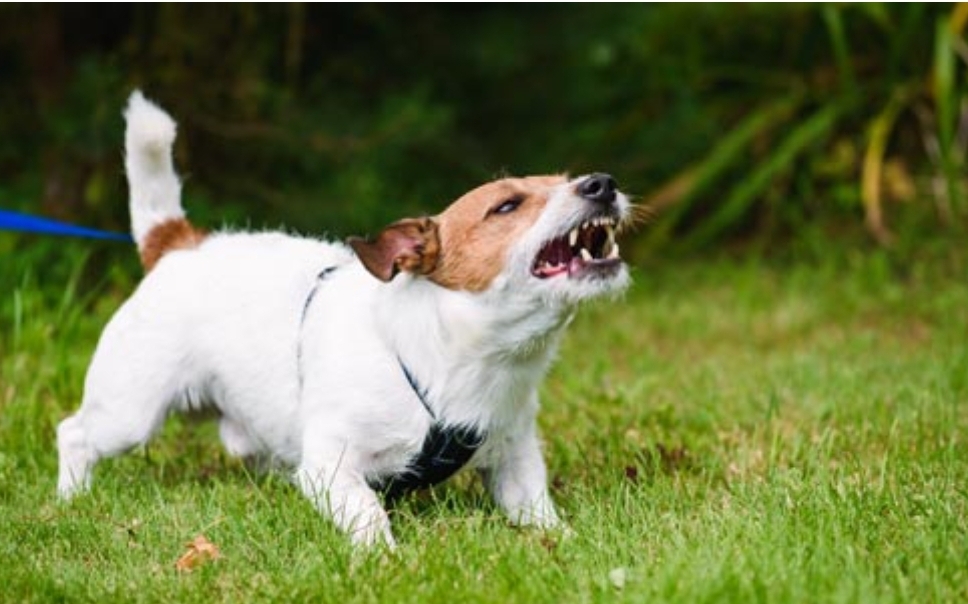
CALMING SIGNALS
Some of these body gestures are referred to as “calming signals” and it is a way your pet tells you they are uncomfortable or not a threat, yet so many people especially parents miss this. They include: Breaking eye contact/turning away, lifting a paw, sniffing the ground, freezing/stillness, showing the whites of the eye (whale/moon eye), lip licking (when not eating), yawning (when not tired), walking slowly, “smiling”, wagging tail, panting, play bow, exposing the belly/lying on back, shake/shiver, lowered head and more.
A note on a dog’s hair – When you see a dog’s hair rise, most people think it is only a bad sign, but it could be arousal, discomfort, or fear. Similar to when we get goosebumps from an awesome story or when watching a scary thriller.
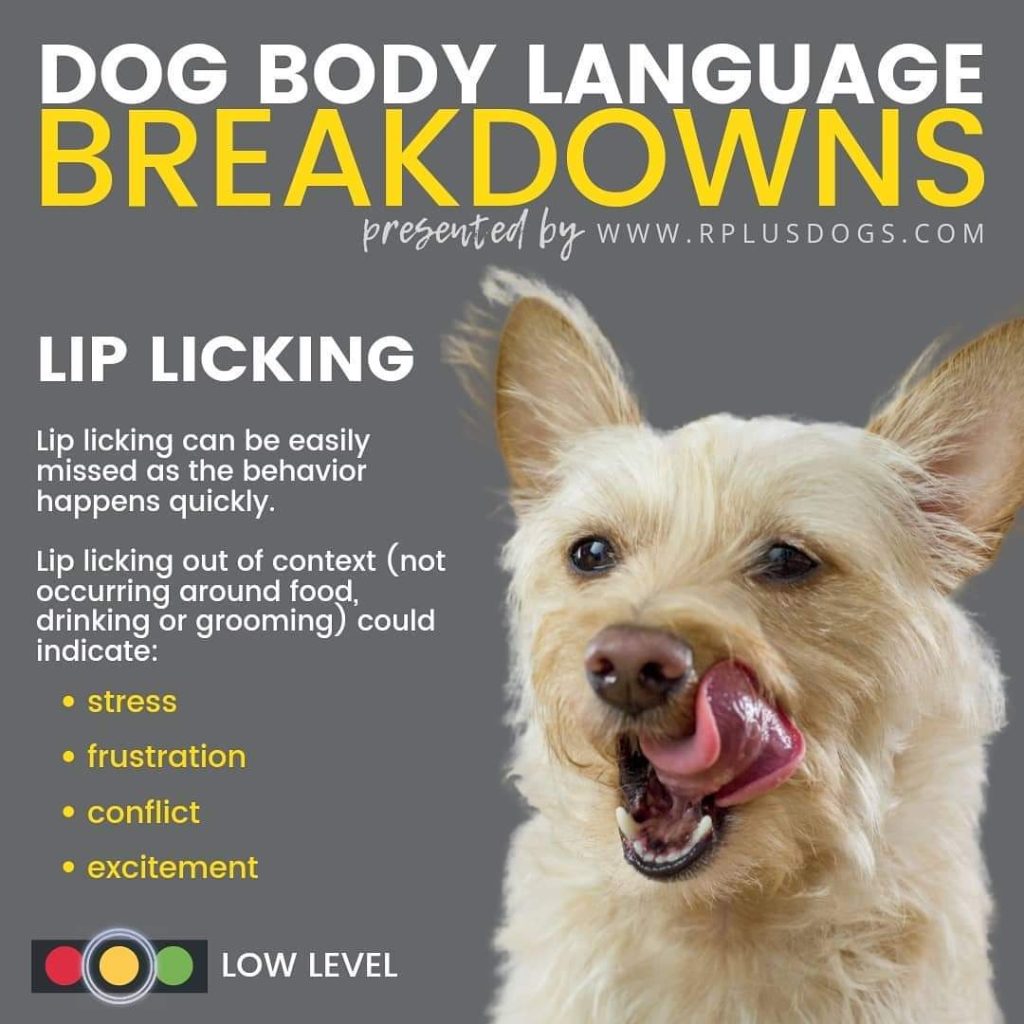
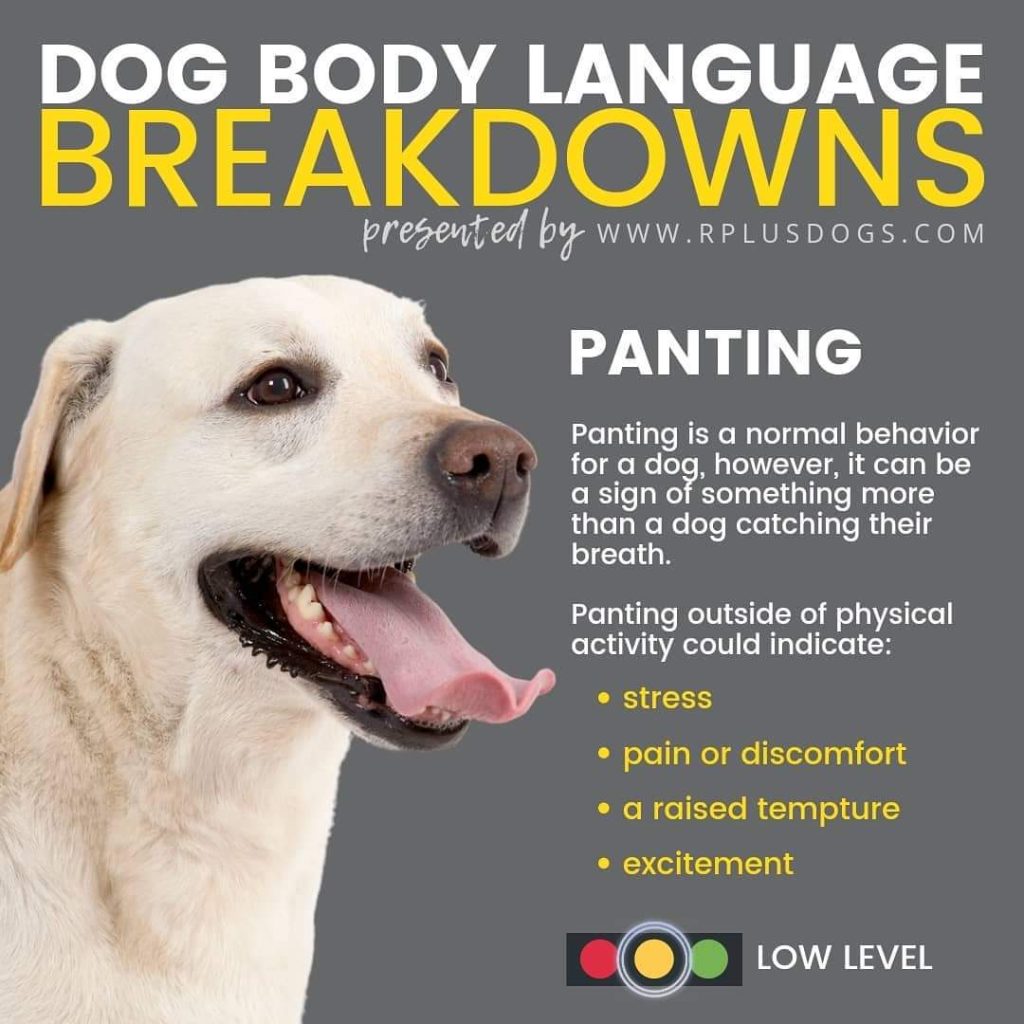
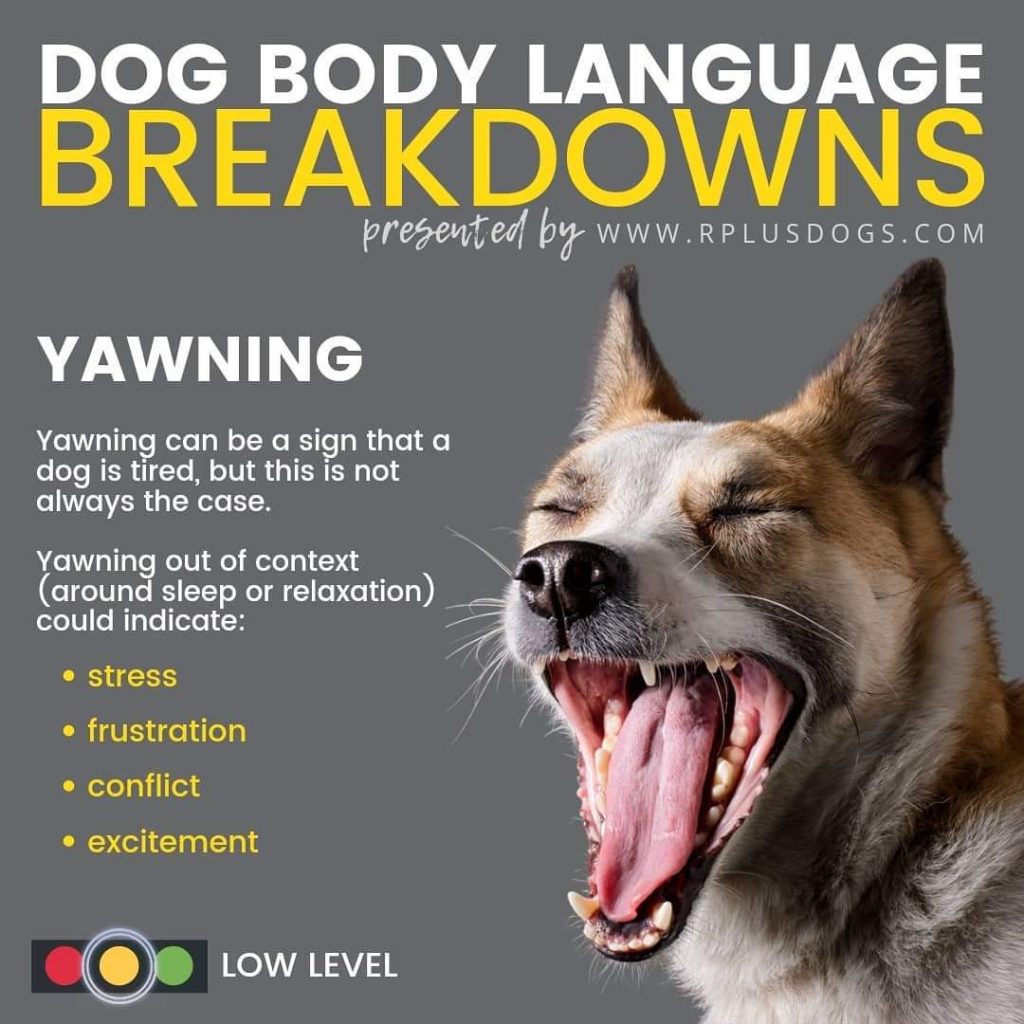
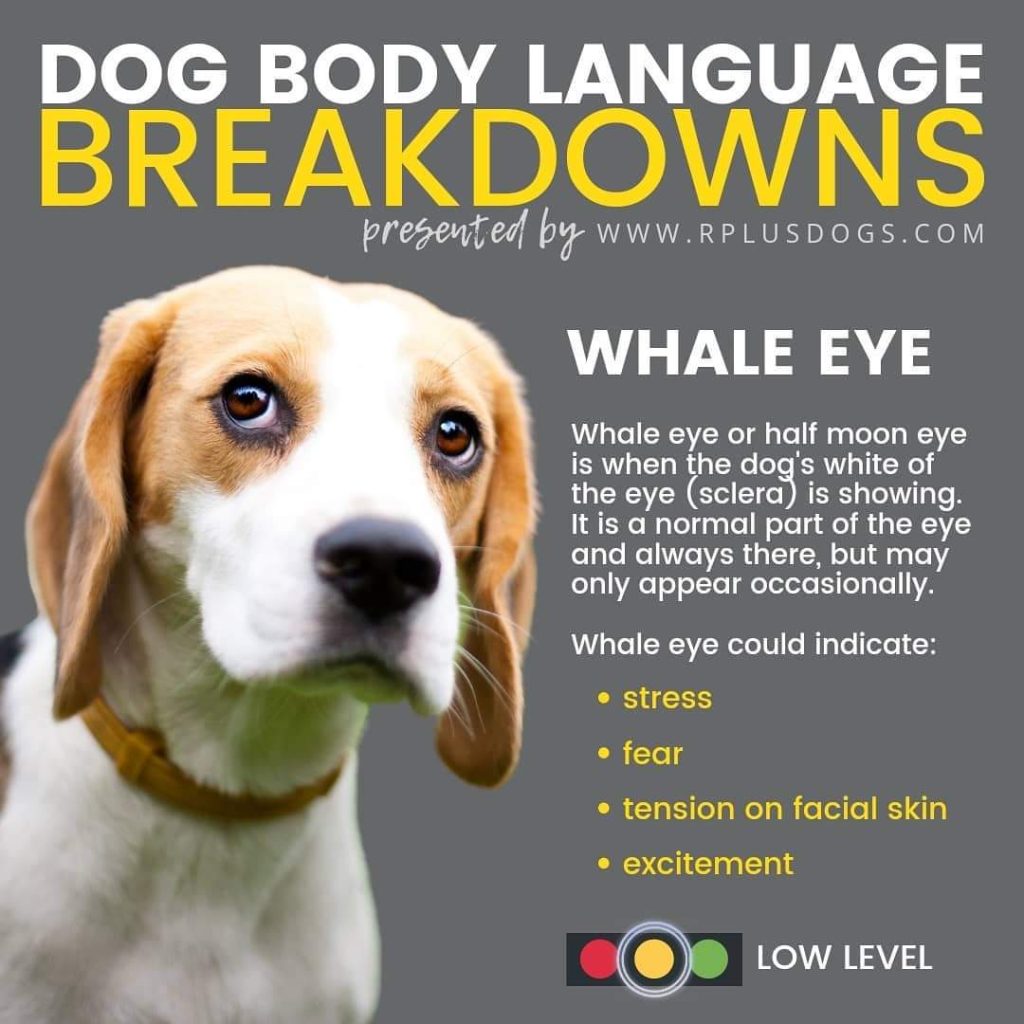

Body Language – Images by R+Dogs
THE MYTH ABOUT THE WAGGING TAILS
Many people will say: ” The dog’s tail was wagging so I know they just wanted to play.” In an article by Dr. Karen Becker, she shares how wagging tails do not always indicate happiness or pleasure. This is a good reason why you should stop using the tail wagging as a sign that all is okay. Tail wagging probably evolved as a dog-to-dog form of communication, since it appears dogs message each other through tail wags.
A 2013 study suggests that dogs who see another dog wagging to the left respond anxiously, with elevated heart rates, and dogs who see another dog wagging to the right remain relaxed. Other tail wagging signals include full body wags, the “circle wag”, the tip of the tail wags, and stiff or rigid wags.
Donnelly breaks it down to:
- A high tail wag can be over-arousal or early warning signal that the dog is frustrated or fearful.
- A loose, half-mast wag can be comfortable and playful.
- A low tail wag can signify fear and serve as an early warning signal.
- Tail between the legs – this body posture is not one of confidence or feeling at ease.
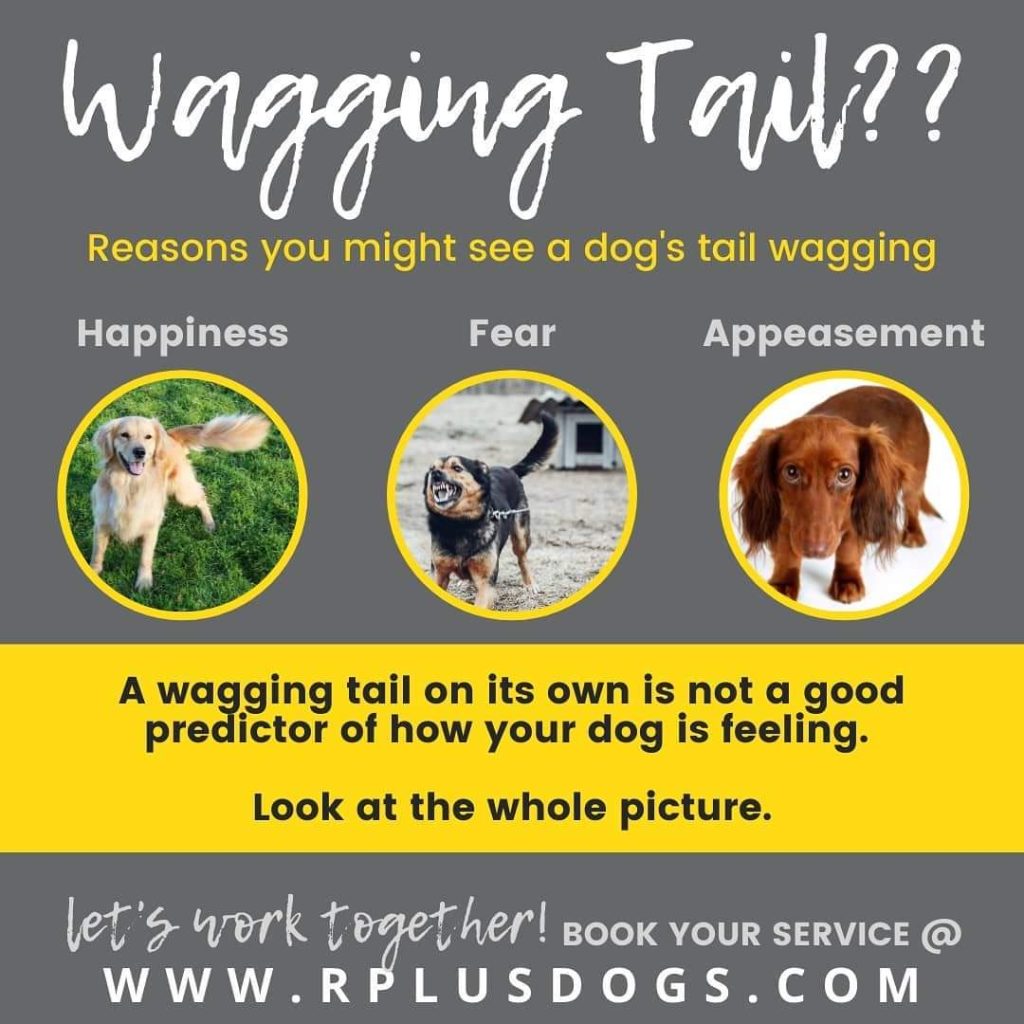
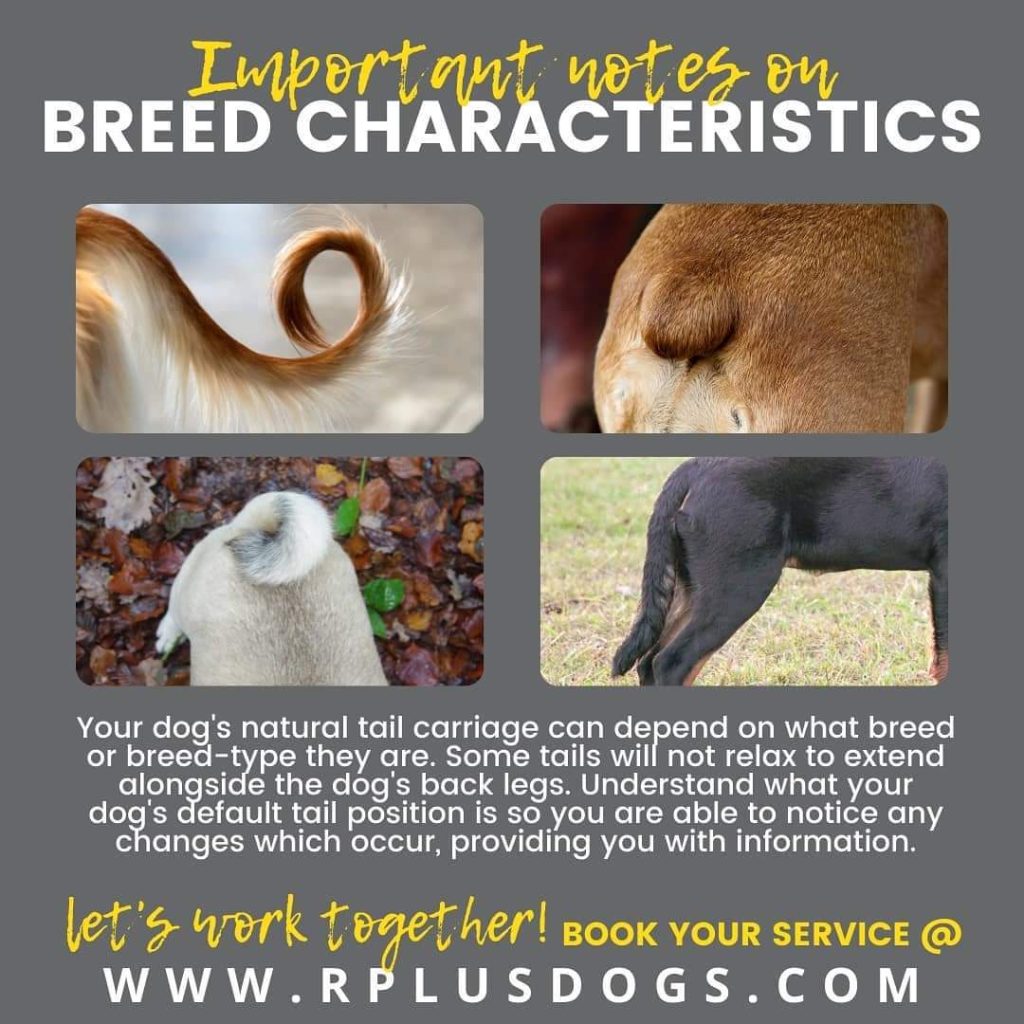
PUTTING IT ALL TOGETHER
When you are trying to decode your dog’s gestures it’s important to look at the whole picture and within context. What happened when the behaviour was displayed? Dogs will most likely not display only one gesture at a time and you will have to look at the whole body, not just one part. Although some body language is universal, focus on your pet’s individual body language. Next time you interact with your dog, look specifically at their body language. Look at how their posture changes when they are in different situations.
Always look at the body language when you want to touch an animal. Touch should always be with clear consent, voluntary, and with ongoing permission. We refer to it as PET-PET-PAUSE. The safest bet is when you let the dog approach you and initiate the interaction. If you notice they are stressed and showing any of the calming signals, move away and take them to a safe space to help them relax.
Here are more pictures by R+Dogs on this topic:
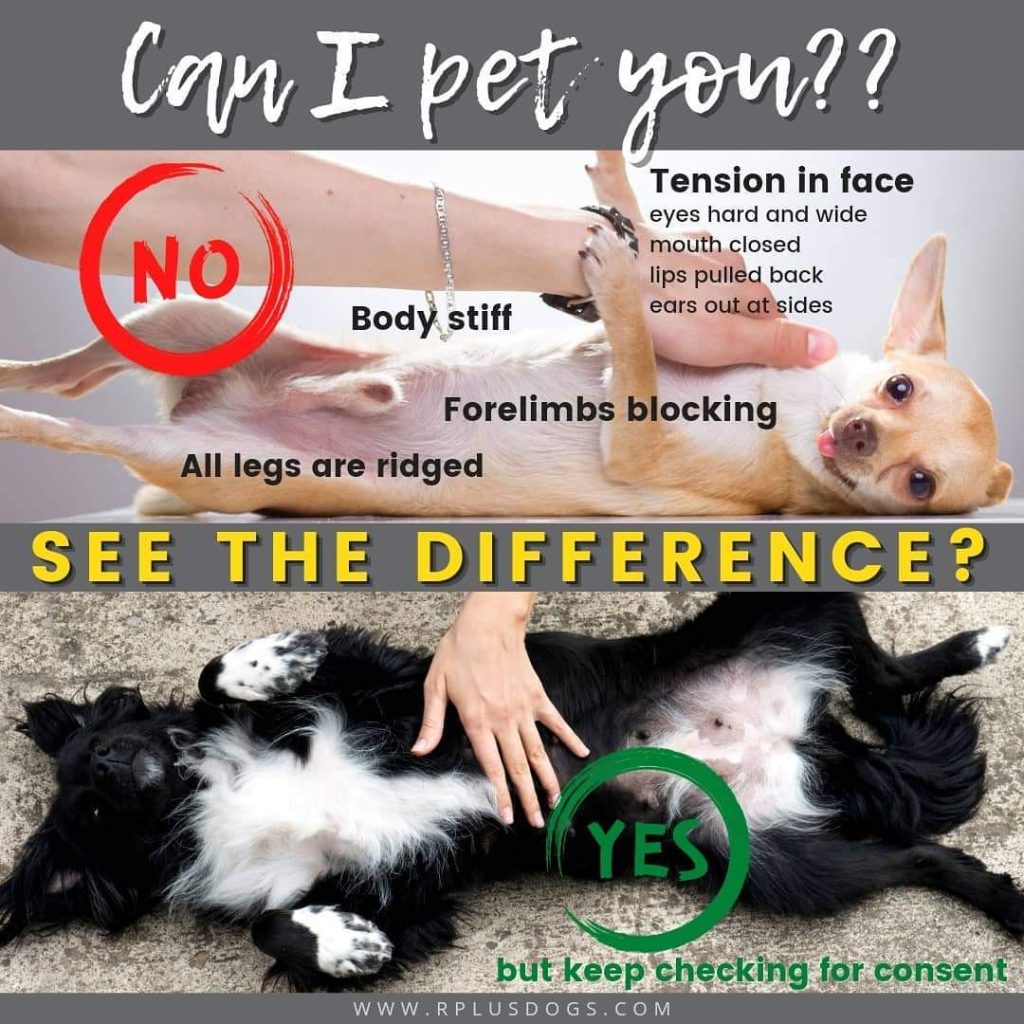
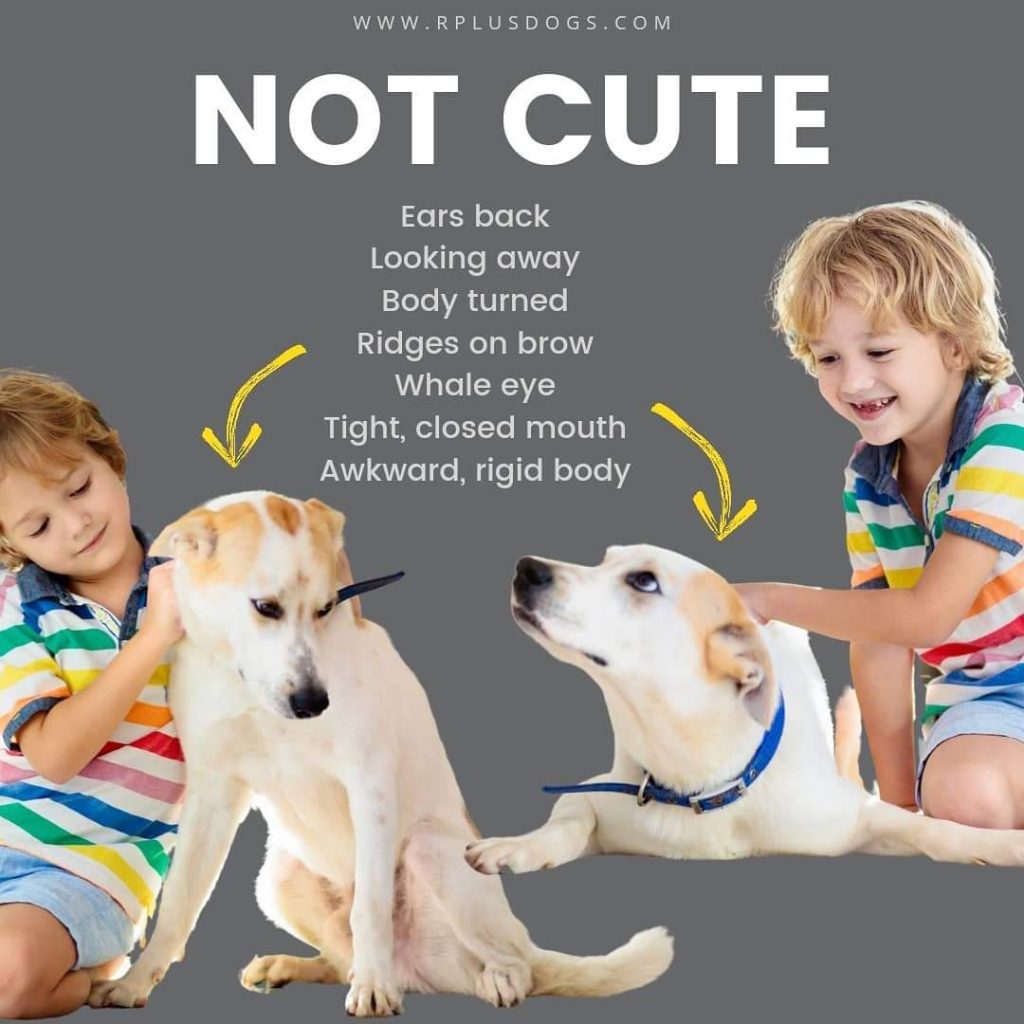
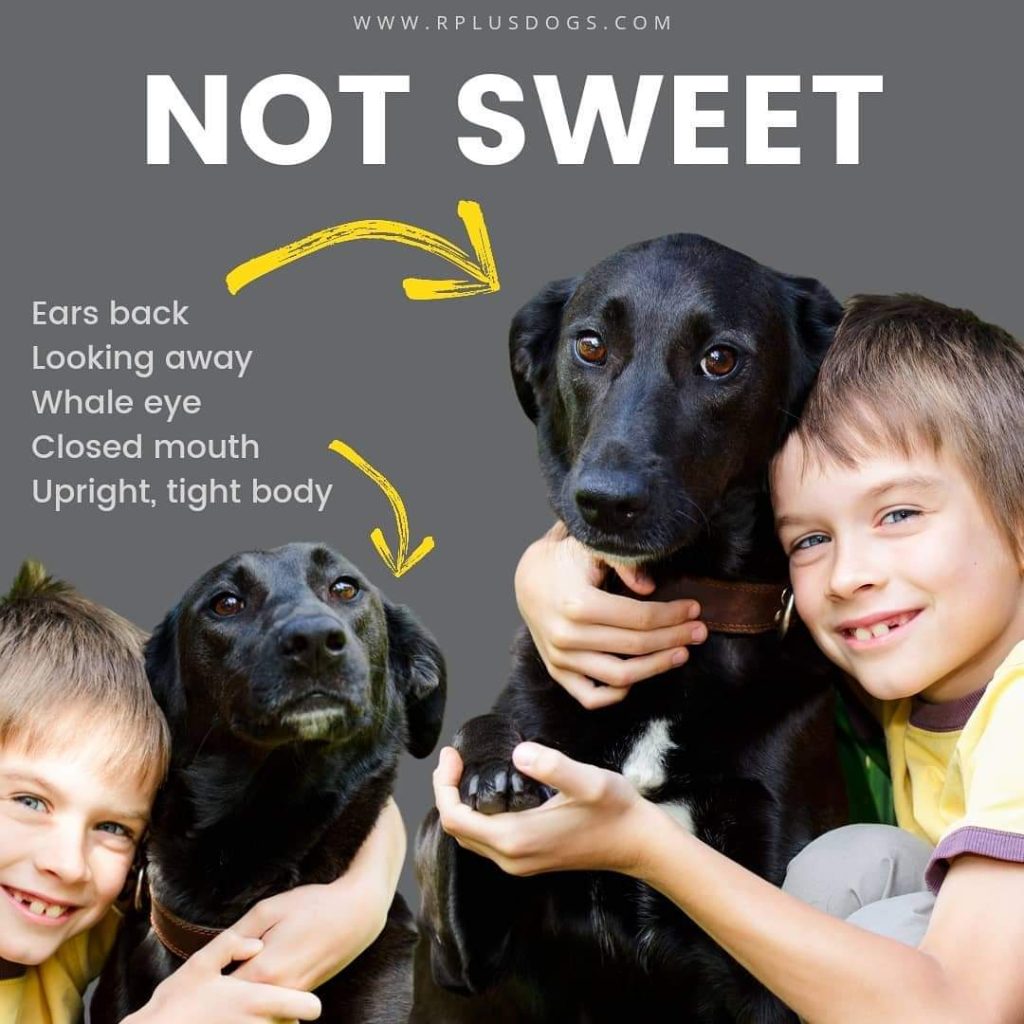
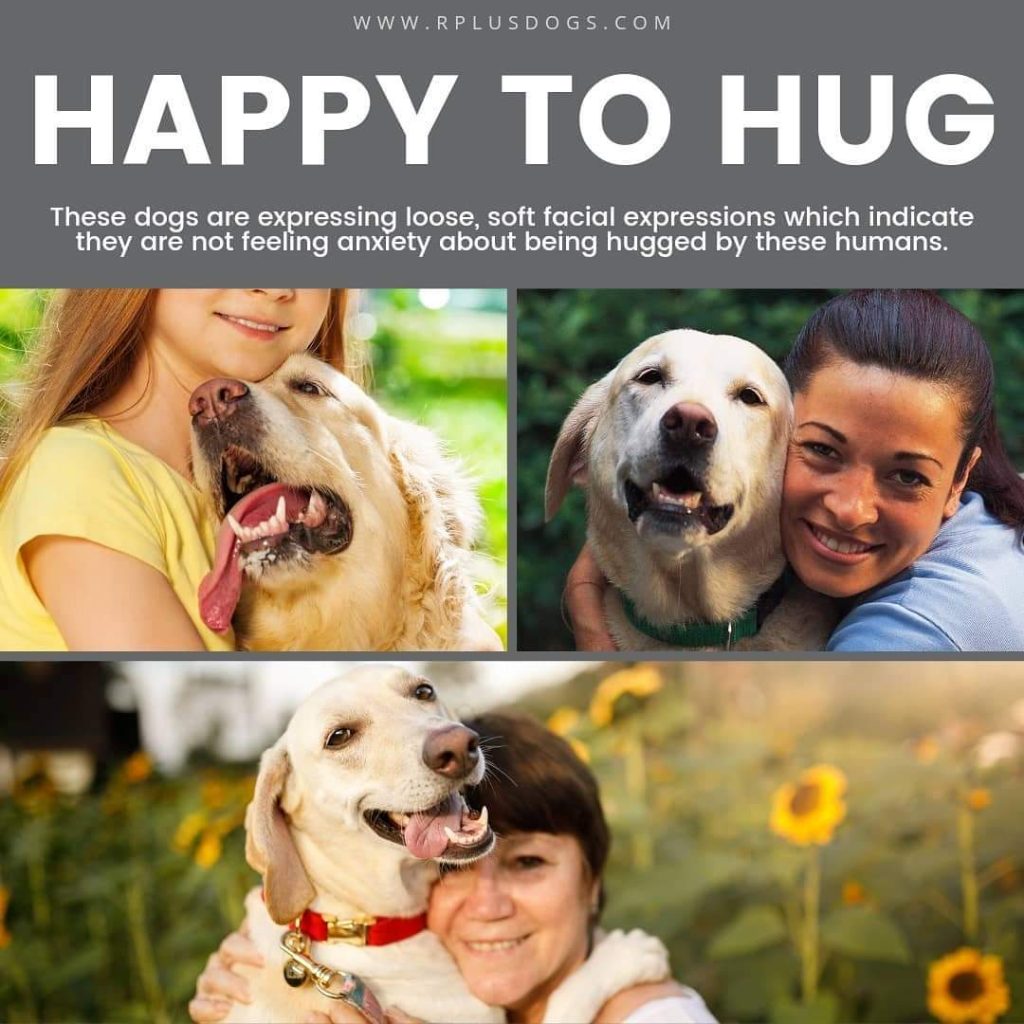
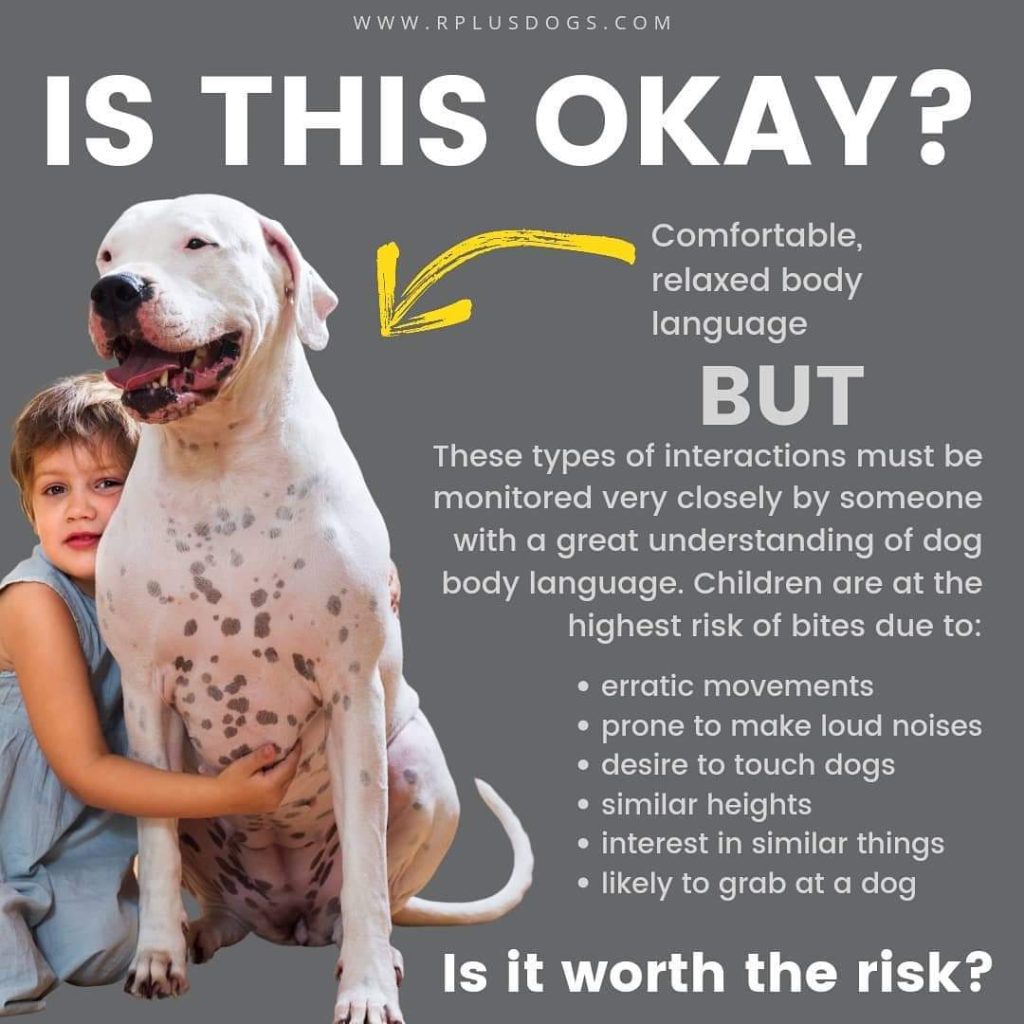
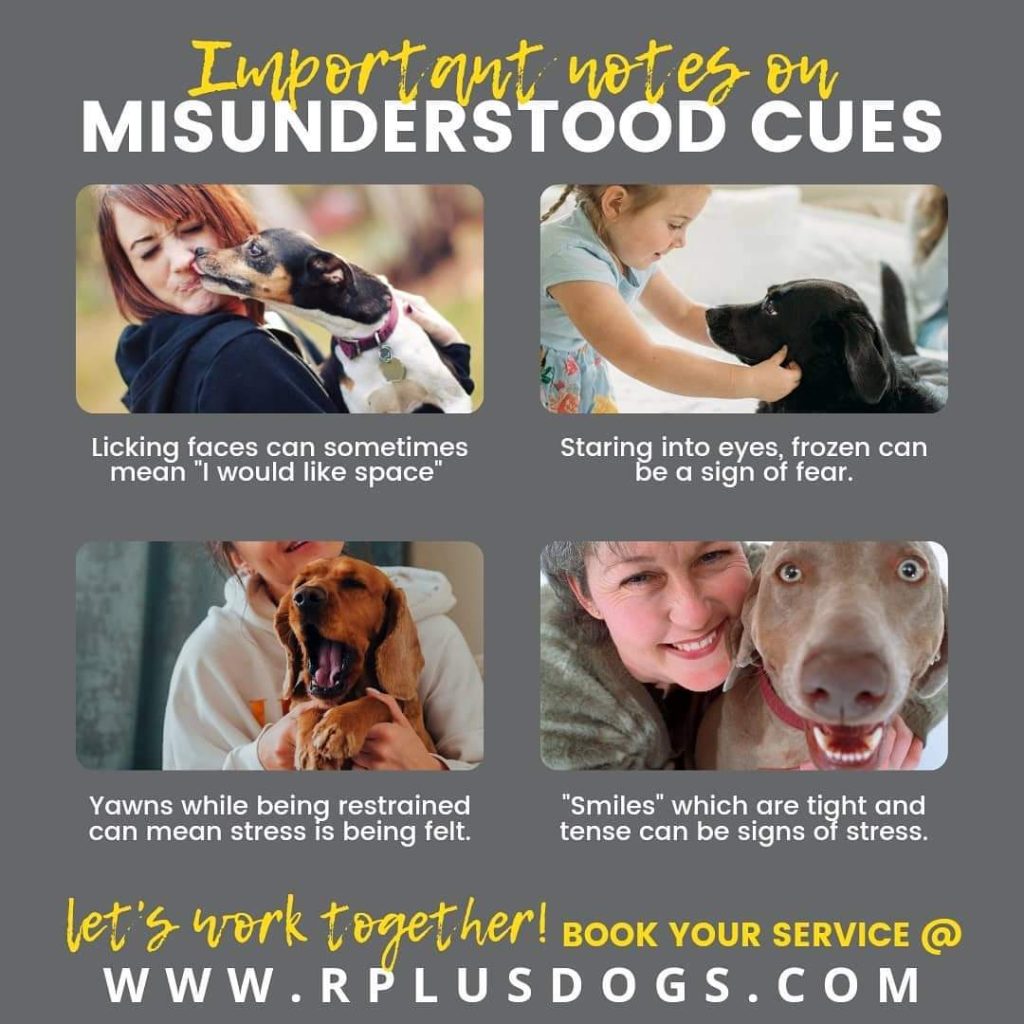
REMEMBER T-E-M-P: Tails, ears & eyes, mouth and posture.
I have heard people brag about how well their dog listens to them, but I want to know how well you listen to your dog by observing, understanding, and reacting to their body language and through it help them navigate this human world, they were forced into, better. Make the time to really “get” your four-legged best friend because it will improve your relationship and avoid unfortunate interactions.
Apart from the fact that it is cruel to crop ears and dock tails of animals, it also affects their body language and therefore their communication.
Before we conclude, here are some hints on the body language of some exotic pets as shared by the Animal Medical Center. Please remember that we do not support the keeping of exotic or wild animals as pets.
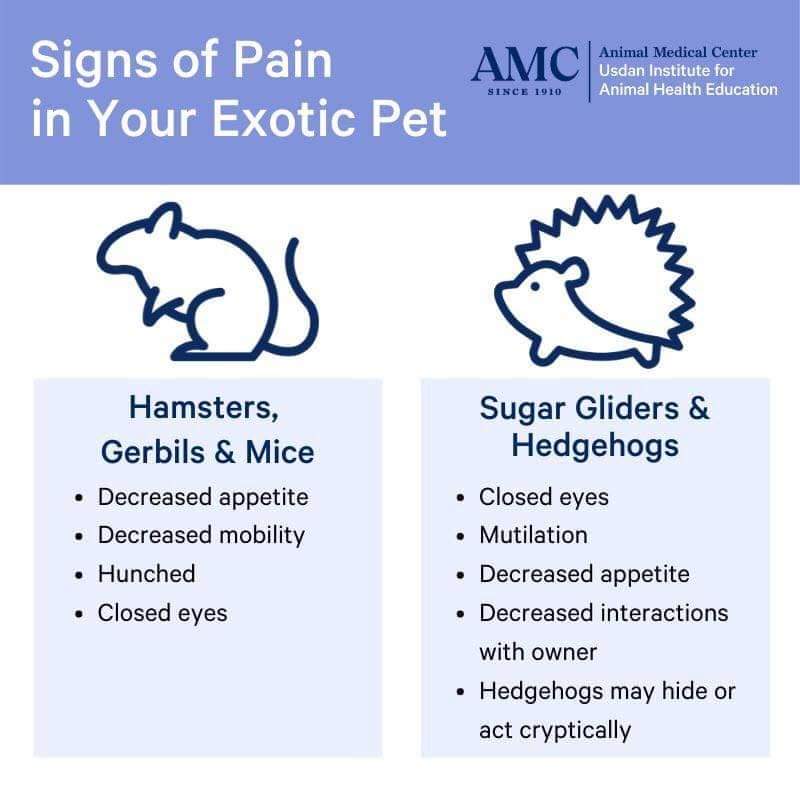
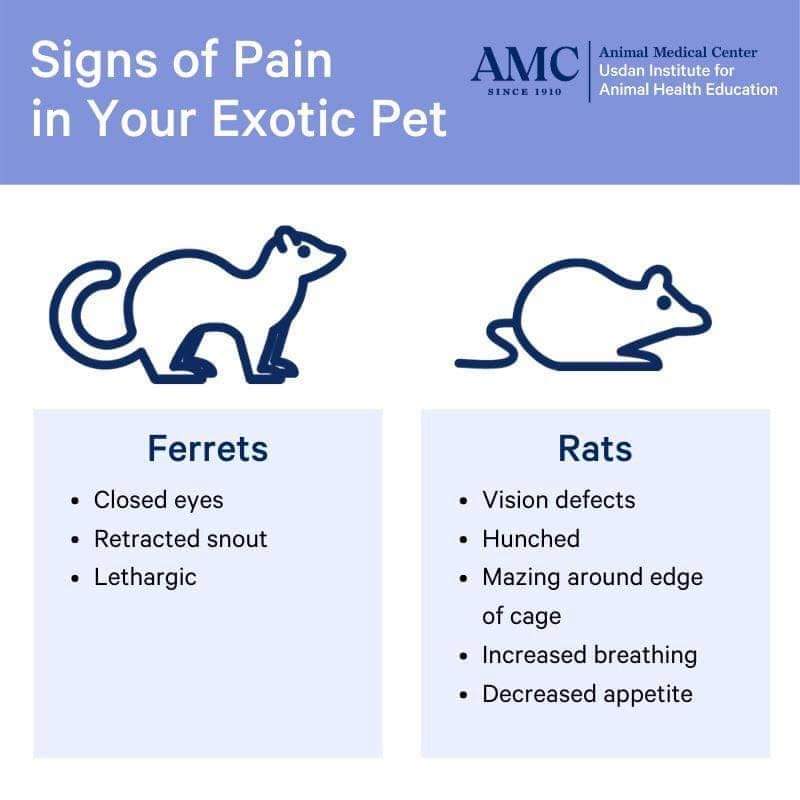
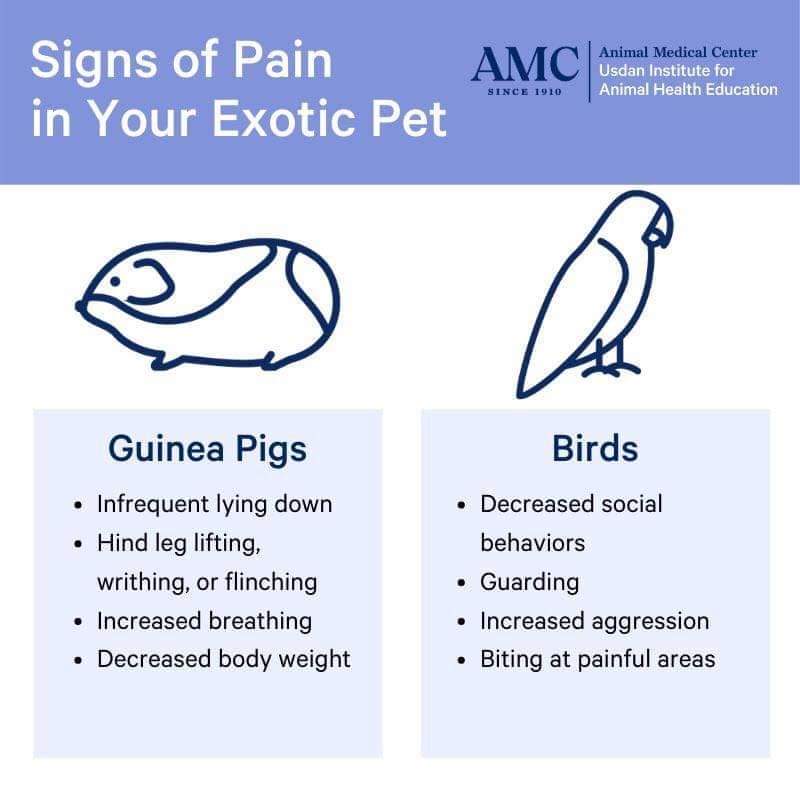
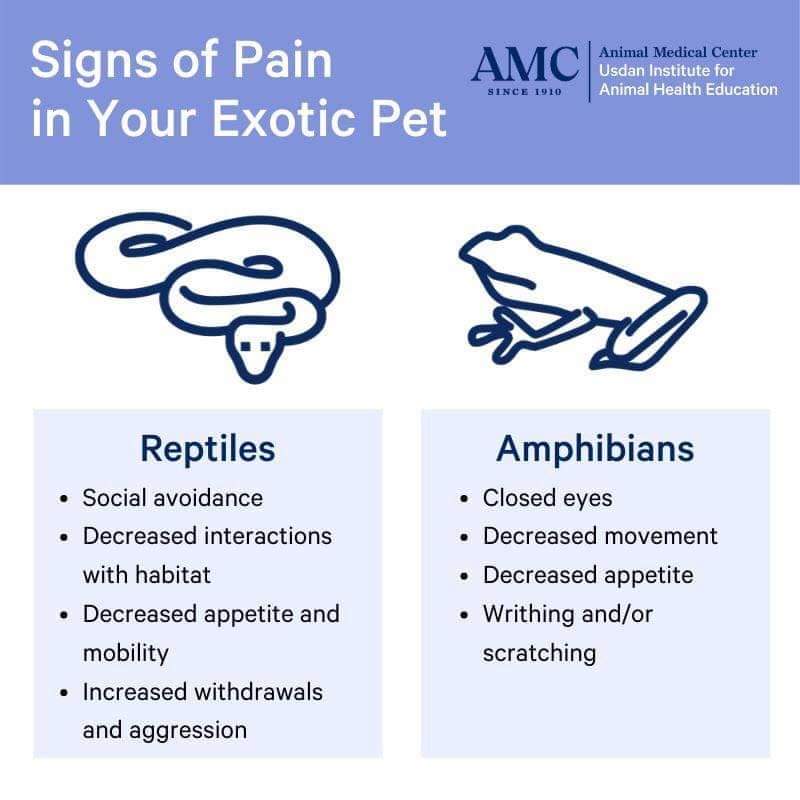
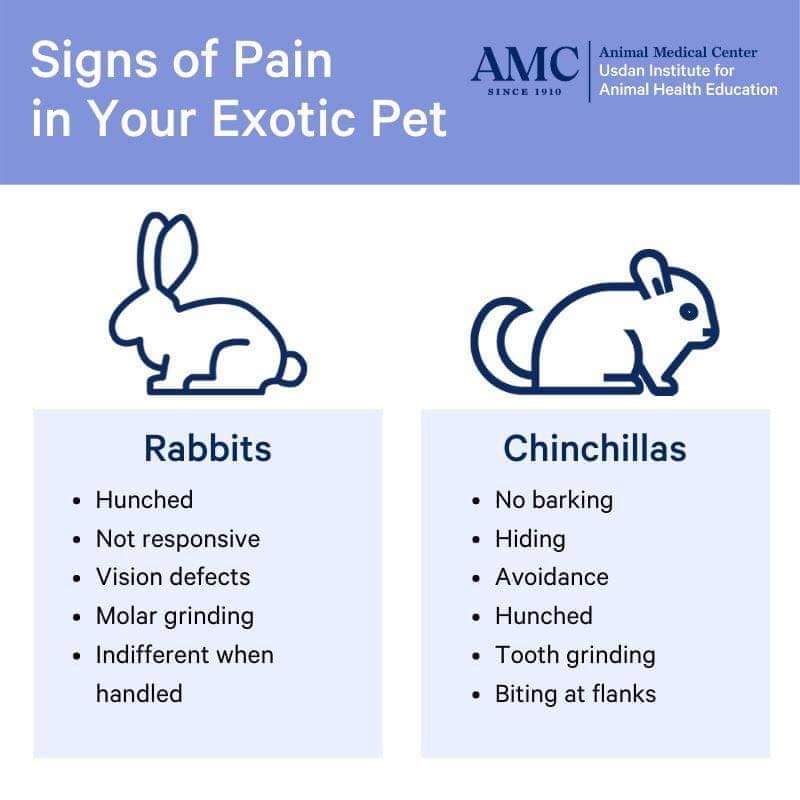
In conclusion, the profound connection between humans and dogs goes beyond verbal communication; it is intricately woven into the fabric of their body language. As pet guardians, recognizing and understanding the subtle cues embedded in their wagging tails, expressive eyes, and varied postures is not just a skill but a responsibility. It allows us to respond to their needs with empathy and care, fostering a relationship built on trust and mutual understanding. By delving into the nuances of dog body language, we not only enhance our ability to meet their emotional and physical needs but also create a harmonious environment where both human and canine companions can thrive. So, let us continue to appreciate the silent yet powerful language of our furry friends, ensuring a lifetime of love, companionship, and shared adventures.
Are you hearing what your dog is saying through their body language?
Next week we will share more on aggressive behaviour of dogs.
WHEN YOU KNOW BETTER, DO BETTER!